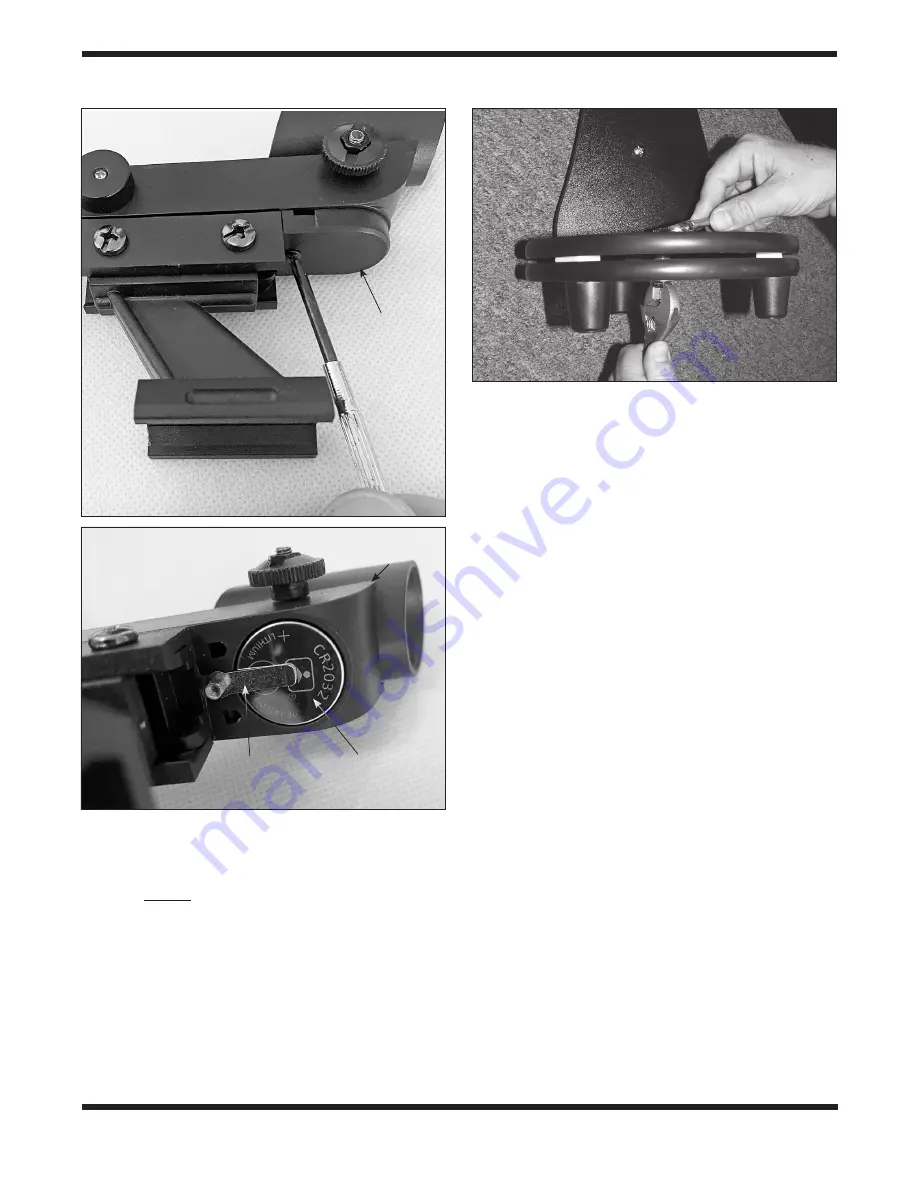
7
400mm
= 40x
10mm
Your telescope comes with two eyepieces: one with 20mm
focal length for low power, wide field viewing, and the other
with 10mm focal length for higher-power observation. Other
eyepieces can be used to achieve higher or lower powers. It is
quite common for an observer to own five or more eyepieces
to access a wide range of magnifications.
We recommend starting a viewing session by inserting your
lowest-power (longest focal length) eyepiece to locate and
center the target object. Low magnification yields a wide field
of view, which shows a larger area of sky in the eyepiece. This
makes finding and centering an object much easier. Trying to
find and center objects with a high power (narrow field of view)
eyepiece is like trying to find a needle in a haystack! Once
you’ve centered the object in the eyepiece, you can switch to
a higher magnification (shorter focal length) eyepiece, if you
wish. This is recommended for small and bright objects, like
planets and double stars. The Moon also takes higher mag-
nifications well. The best rule of thumb with eyepiece selec-
tion is to start with a low power, wide-field eyepiece, and then
work your way up in magnification. If the object looks better,
try an even higher magnification eyepiece. If the object looks
worse, then back off the magnification a little by using a lower-
power eyepiece.
Magnification Limits
Every telescope has a useful magnification limit of about 2x
per millimeter of aperture. This translates to a limit of 200x for
the SkyScanner 100 Reflector, and 180x for the StarMax 90
Mak-Cass. Some telescope manufacturers will use mislead-
ing claims of ultra-high magnifications: “See distant galaxies
at 640X!” While such magnifications are technically possible,
the actual image at that magnification would be a dim, indis-
tinct blur. Low and moderate magnifications are what give the
best views. A small, but bright and crisply detailed image is
always better than a dim, blurry, over-magnified one.
Altitude and Azimuth (Aiming the Telescope)
Your TableTop telescope’s base permits motion along two
axes: altitude (up/down) and azimuth (left/right) (
Figure 3
).
Both motions can be made simultaneously and in a continu-
ous manner for easy aiming. This way you can point to any
position in the night sky, from horizon to horizon.
Both the altitude and azimuth axes have adjustable tension.
You want sufficient friction of motion to keep the telescope
from rotating too freely in each axis, which can make it dif-
ficult to land on and stay aimed at an object you wish to view.
However, if you apply too much tension the telescope will be
difficult to move smoothly and in small increments needed to
Figure 10.
To replace the EZ Finder II’s CR2032 3V lithium
battery,
A
) first remove the small Phillips screw to unlock the battery
cover,
B)
remove the old battery and replace it with the positive (+)
side facing the retaining clip.
Retaining clip
Battery
Battery cover
Figure 11.
Making optional adjustments to the azimuth tension.
A
B





















